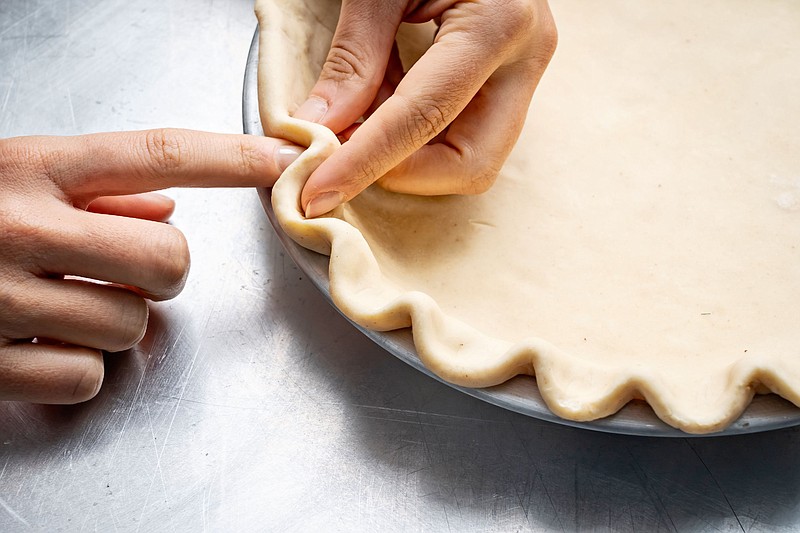While I love desserts of all types, if I were forced to choose between cake and pie, I'm going for the latter. Why? I love pie crust. When done properly, it is buttery, flaky perfection and takes whatever filling it holds to new heights. However, making a good pie crust is not an easy feat without proper technique. Aside from carefully following a recipe from a trusted source, here are seven traditional rolled pie crust tips every baker should know.
1. Keep the dough ingredients cool. The key to standard pie crust is having pockets of fat surrounded by flour. But if that fat starts to melt and mixes with the flour, it can start to develop gluten, which can lead to a tough crust. To prevent this, keep everything as cold as possible. Some bakers go so far as to put ingredients and equipment in the fridge or freezer before making pie crust. This is certainly an option, but freezing the butter or other fat can actually make things more difficult for you if you're just using your fingers, as it will be too stiff to break into small pieces. If you have them — or want to make the investment — food processors or pastry cutters are great for limiting how much you have to touch the dough with your warm hands. But even without such equipment, as long as you work quickly, you should be good to go.
2. Use a light touch. Tough pie crusts are typically the result of working the dough too much (again, gluten). You don't need to make sure it's a perfectly uniform ball. "As long as the dough is mostly holding together, you don't need to spend a lot of time kneading it," Susan Reid wrote for King Arthur Baking.
3. Hydrate the dough (but not too much). Following the point above about the dough not needing to be perfectly smooth and holding together, be careful about how much liquid you add when making your pie crust. If it's not holding together at all, you can add more liquid (typically ice water) one tablespoon at a time until the dough holds together when you squeeze it with your hand. Too much liquid also can develop too much gluten.
4. Chill the dough. While not completely necessary all the time, it's usually a good idea to put the pie dough in the refrigerator for 15 to 30 minutes before rolling it out. The main reason I do so is to keep the fat from melting, particularly if you're working in a warm kitchen. Also, if you worked the dough more than you should have, a rest period allows any gluten that may have developed to relax, which should make the pie crust easier to roll out. And while you can keep the pie dough in the fridge for longer than 30 minutes (up to two days), it will be too cold at that point and you'll need to let it sit on the counter at room temperature to let it soften before rolling it out.
5. Keep the dough from sticking. To prevent the dough from sticking to the counter when rolling it out, large sheets of parchment paper are a great solution, but I've encountered them only in professional kitchens. For home bakers, an easy alternative is simply to dust everything — the counter, the dough itself and the rolling pin — with as much flour as needed. If it starts to stick at any point, simply add flour. You don't really need to be concerned about adding too much at this point, because you can brush off any excess.
6. Roll the dough out evenly. Pie crust with an even thickness is important so that the pie has the proper structure and is evenly cooked. Any good pie crust recipe should tell you to rotate the dough as you're rolling it out, but I also like to flip it over once or twice during the process for extra insurance. (This is also an easy way to tell when you need to add flour to prevent it from sticking.) And when rolling, roll from the center out (it's easier to exert even pressure this way instead of trying to roll across the entire diameter of the dough) and don't roll the pin over the edge (as this can cause it to get too thin).
7. Relax. I've already talked about letting the pie dough relax in the fridge, but this time I'm talking to you. Yes, we'd all love to make picture-perfect pies, but don't stress yourself out too much about perfection. You can easily fix any tears or rips by pinching the dough together or filling it in with extra bits of dough. Regardless of how the pie looks, it should still taste great because any pie is better than no pie.
